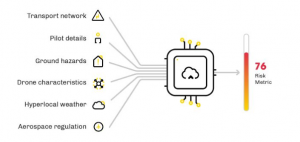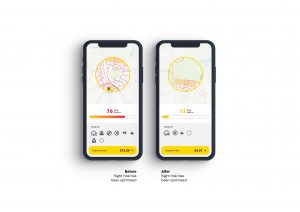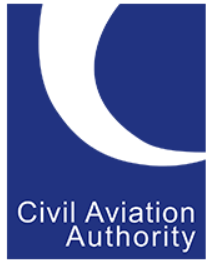‘Flock Enterprise’ will help drone fleet operators take proactive steps to reduce drone flight risk, and reward them with cheaper insurance premiums.
London, 18 June, 2019 – ARPAS-UK Member, Flock, the London-based insurtech startup, unveiled today ‘Flock Enterprise’, a first-of-its-kind insurance and risk management solution for drone fleets. The product leverages real-time data to provide highly bespoke insurance policies for enterprises using drones. This data-driven approach transforms how organisations insure their connected drone fleets, offering greater visibility into flight risk and rewarding safer flights with cheaper insurance premiums.
Flock Enterprise is the first product worldwide to offer real-time insurance for drone fleets. Several notable organisations are already using the solution including Flock’s flagship customer Texo DSI, a drone survey and inspection company who operate the world’s most dynamic, multi-million pound drone fleet.
 Flock Enterprise is powered by Flock’s proprietary Risk Intelligence Engine, which analyses and prices real-time drone flight risks on an individual basis. High-risk drone flights (such as those undertaken in densely populated areas, or during bad weather) receive higher risk metrics, and therefore higher insurance prices. Safer flights (such as those undertaken in rural areas, or during optimal weather conditions) are met with lower prices. Individual flight prices are then seamlessly aggregated to calculate a monthly premium, which fairly reflects the actual usage and risk profile of a drone fleet in a given month.
Flock Enterprise is powered by Flock’s proprietary Risk Intelligence Engine, which analyses and prices real-time drone flight risks on an individual basis. High-risk drone flights (such as those undertaken in densely populated areas, or during bad weather) receive higher risk metrics, and therefore higher insurance prices. Safer flights (such as those undertaken in rural areas, or during optimal weather conditions) are met with lower prices. Individual flight prices are then seamlessly aggregated to calculate a monthly premium, which fairly reflects the actual usage and risk profile of a drone fleet in a given month.
Flock’s Risk Intelligence Engine
 Unique to Flock’s innovative insurance model are the granular risk insights that are shared with customers. By using these insights, enterprises can proactively improve safety standards across their fleets and reduce their insurance premiums as a result.
Unique to Flock’s innovative insurance model are the granular risk insights that are shared with customers. By using these insights, enterprises can proactively improve safety standards across their fleets and reduce their insurance premiums as a result.
Flock has already demonstrated the financial and safety benefits of its risk analysis technology. After launching Europe’s first Pay-as-you-fly drone insurance product in conjunction with Allianz, Flock has analysed and priced the risk of more than 500,000 drone flights. By clearly visualising these risks in Flock’s app, thousands of drone pilots have been empowered to optimise towards lower-risk flights, and reduce their policy price by an average of 15% as a result.
Thousands of pilots have used Flock’s Pay-as-you-fly mobile app to pinpoint where and when it is safest to fly.
White paper:
In conjunction with the launch of Flock Enterprise, Flock has published a white paper detailing the use of real-time data in insurance and risk management. To access the white paper for free, visit Flock’s website.
 Ed Leon Klinger, Flock CEO said: “At Flock, we believe that insurance can be so much more than a piece of paper. We’re using cutting edge data science to not only unlock fully digital, customer-centric insurance products, but to completely transform the way organisations understand, manage, and mitigate their own risks.”
Ed Leon Klinger, Flock CEO said: “At Flock, we believe that insurance can be so much more than a piece of paper. We’re using cutting edge data science to not only unlock fully digital, customer-centric insurance products, but to completely transform the way organisations understand, manage, and mitigate their own risks.”
He added: “Our Pay-as-you-fly insurance policies have now helped thousands of small businesses fly safer. With the launch of Flock Enterprise, we’re making our technology available to some of the largest drone companies in the world. We’re delighted to be enabling Texo and others to expand the use-cases of our technology and theirs.”
Graham Brown, Chief Executive Officer, ARPAS-UK said: “Flock have created a new level of insurance for companies who want to access real-time data when assessing their flights. This will support both pilots and Managers in understanding risks involved to help them make the best possible decisions.”
David Williams, Chief Operating Officer, Texo iHUB said: “We see Flock more as a partner than as an insurer. Rather than simply offering us a price, they actively help our pilots and risk managers identify and minimise the organisational risks we’re undertaking.”
He added: ‘We’re excited to work closely with them moving forward to really push the boundaries of what’s possible in the commercial drone industry.”
__________________________
Notes to editors
Additional information about Flock:
- Flock is a London-based, VC- and Government-backed insurtech startup operating at the cutting edge of the data analytics and insurance spaces. Flock began its journey as an academic research project in 2015. Having partnered with Allianz, the world’s leading aviation insurer, Flock now insures 30% of commercial drone businesses in the UK with its suite of fully digital, data-driven drone insurance and risk-management products. These range from Pay-as-you-fly policies for SMEs, up to usage-based enterprise insurance for connected drone fleets.
- Flock is initially launching Flock Enterprise to UK-based drone organisations (with their global flights covered). Flock Enterprise provides bespoke equipment insurance for fleets of any size and drone type, with flexible liability limits (up to £25M). Flock is planning to roll out Flock Enterprise to international drone organisations in the future.
- Flock is now working with global insurers to capture new markets entirely and make the world a safer, smarter place with its technology. Flock’s Risk Intelligence Engine equips insurers to accurately identify and quantify risk in an entirely new way, allowing them to confidently build and launch never-before-seen products in new industries.
Additional information about Texo
- Texo provide fully integrated survey and inspection services, delivered by the most advanced fleet of drones and associated sensor payloads. The company supports sectors such as: critical infrastructure, Oil & Gas, Nuclear, Renewables, Construction and Utilities allowing clients to make highly informed engineering decisions, based on the very highest levels of safety, efficiency and accuracy.
- Texo hold the UK’s most comprehensive set of congested area commercial flight permissions ever awarded by the UK Civil Aviation Authority (CAA).
Flockcover.com
 Advanced features include network management, where operators can manage subcontractors, fleet management, pilot logs as well as sharing and visualisation. Powerful project management tools give the operator’s clients complete transparency as to the status of their jobs. A single logon to accesses outcomes and audit trails. Flight planning is supplied through a partnership with Altitude Angel which provides the highest-quality, real-time geospatial data.
Advanced features include network management, where operators can manage subcontractors, fleet management, pilot logs as well as sharing and visualisation. Powerful project management tools give the operator’s clients complete transparency as to the status of their jobs. A single logon to accesses outcomes and audit trails. Flight planning is supplied through a partnership with Altitude Angel which provides the highest-quality, real-time geospatial data. Dronecloud was funded and developed from our own drone service operation and we’re proud to have built such an innovative platform without the need for outside investment.
Dronecloud was funded and developed from our own drone service operation and we’re proud to have built such an innovative platform without the need for outside investment.


 Flock Enterprise is powered by Flock’s proprietary Risk Intelligence Engine, which analyses and prices real-time drone flight risks on an individual basis. High-risk drone flights (such as those undertaken in densely populated areas, or during bad weather) receive higher risk metrics, and therefore higher insurance prices. Safer flights (such as those undertaken in rural areas, or during optimal weather conditions) are met with lower prices. Individual flight prices are then seamlessly aggregated to calculate a monthly premium, which fairly reflects the actual usage and risk profile of a drone fleet in a given month.
Flock Enterprise is powered by Flock’s proprietary Risk Intelligence Engine, which analyses and prices real-time drone flight risks on an individual basis. High-risk drone flights (such as those undertaken in densely populated areas, or during bad weather) receive higher risk metrics, and therefore higher insurance prices. Safer flights (such as those undertaken in rural areas, or during optimal weather conditions) are met with lower prices. Individual flight prices are then seamlessly aggregated to calculate a monthly premium, which fairly reflects the actual usage and risk profile of a drone fleet in a given month. Unique to Flock’s innovative insurance model are the granular risk insights that are shared with customers. By using these insights, enterprises can proactively improve safety standards across their fleets and reduce their insurance premiums as a result.
Unique to Flock’s innovative insurance model are the granular risk insights that are shared with customers. By using these insights, enterprises can proactively improve safety standards across their fleets and reduce their insurance premiums as a result. Ed Leon Klinger, Flock CEO said: “At Flock, we believe that insurance can be so much more than a piece of paper. We’re using cutting edge data science to not only unlock fully digital, customer-centric insurance products, but to completely transform the way organisations understand, manage, and mitigate their own risks.”
Ed Leon Klinger, Flock CEO said: “At Flock, we believe that insurance can be so much more than a piece of paper. We’re using cutting edge data science to not only unlock fully digital, customer-centric insurance products, but to completely transform the way organisations understand, manage, and mitigate their own risks.”





